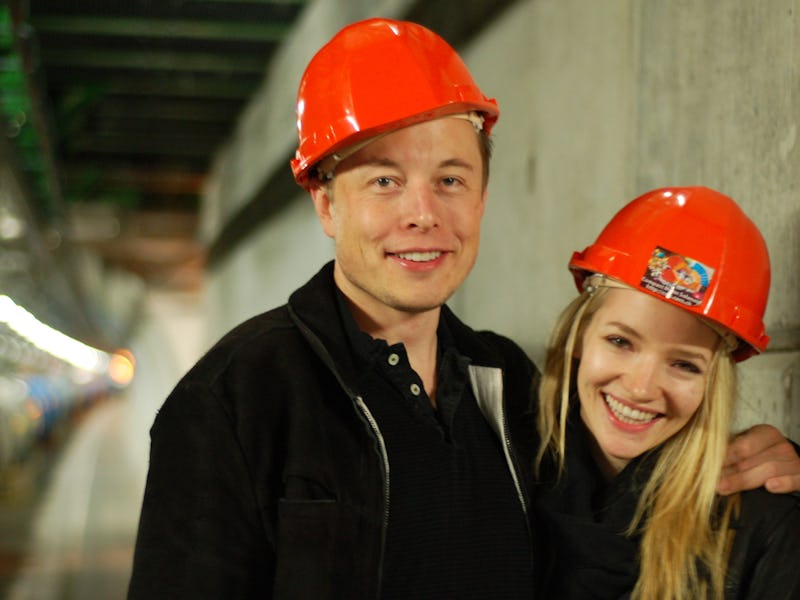Elon Musk is digging his first giant hole in the parking lot of the SpaceX facility in Hawthorne, California, but it won’t be his last. In the future, Musk imagines his Boring Company turning the ground beneath major cities into a honeycomb of interconnected tunnels — a perfect network for his other haphazard brainchild, the Hyperloop. In a new interview with Bloomberg Businessweek, Musk outlined the problems and possibilities a network of hyperloop-integrated tunnels would hold for the future of transportation.
Somehow, the Boring Company isn’t a complex joke of Musk’s: he’s actually working to improve tunneling speed with the goal of sticking the Hyperloop, along with other mass transit options and personal vehicles, deep under the Earth. And although it basically sounds like he’s making a fancy, super-fast subway, Musk is talking about digging 30 layers of tunnels in the ground to create a three-dimensional transportation system that decreases congestion.
“We have skyscrapers with all these levels, and we have a flat, two-dimensional road system,” Musk told Bloomberg Businessweek. “When everyone decides to go into these structures and then exits them at the same time, you’re going to get jammed.”
According to Bloomberg Businessweek, Musk’s first plans for the tunnels (after he decided he was serious about boring) were for cars and high-speed trains to alleviate urban gridlock. Musk thinks a truly three-dimensional transit network is way easier to achieve underground, rather than in the air with flying cars, but as transit moves underground, local networks will need to link up to a hypothetical worldwide system of hyperloop tubes, and that might need to happen underground. The Hyperloop concept could be viable on a smaller scale as well — if Musk can create a more efficient way to dig tunnels, replacing subways with small-scale magnetic-levitation trains in vacuum tunnels (like mini-Hyperloops) might be the best way to get around.
Efficiency, however, is the biggest hurdle — tunneling takes a long, long time. Nannie, a used boring machine Musk is considering buying, can tunnel about 300 feet a week. Musk wants to figure out a way to do a mile a week. Shane Yanagisawa, Musk’s tunneling project manager, said that the limiting factor is the amount of dirt the boring machine can remove from the hole at a time.
Right now, all Musk has is a big hole in the parking lot at SpaceX. He wouldn’t tell Bloomberg Businessweek where it was going, yet, but did say that it will initially be designed for cars. That makes sense, as paving the floor of a tunnel seems a lot easier than installing the system of rails a mini Hyperloop tube would need, but that technology is always on Musk’s mind — he told Bloomberg Businessweek he’s been thinking about integrating Hyperloop into tunnels for years. Now he just needs to dig.
